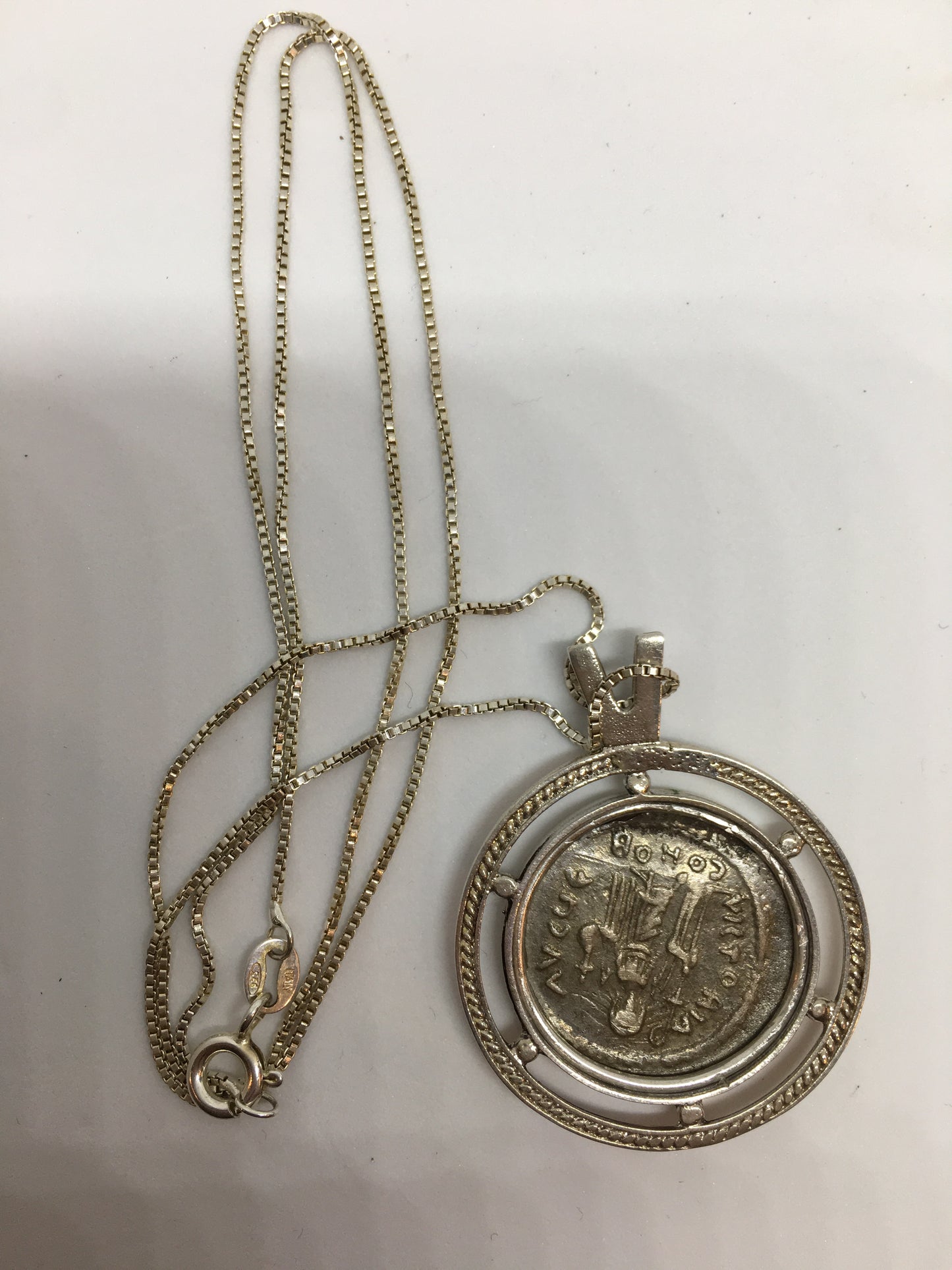Pendants
Silver Byzantine coins pendants sterling silver 925
Silver Byzantine coins pendants sterling silver 925
Share
Couldn't load pickup availability
SILVER BYZANTINE COINS
Though a variety of “ceremonial” silver Byzantine coins were made, we’ll examine just the principal issues made for regular circulation.
Most Byzantine silver coins were struck at the mint in Constantinople. This rule applies to almost every period of Byzantine history except the earliest, during which the only regular issues appear to have been struck at mints in Italy and North Africa.
These regions formerly were part of the Roman Empire, but long ago had been lost to Germanic invasions.
The opportunity to strike coins there returned during the reign of the Byzantine Emperor Justinian I (527 to 565), when an effort was made to reclaim these lands.
All of the early Byzantine silver coins from western mints were small and thin, and were denominated as siliquae (and fractional siliquae) or were valued in terms of copper nummi (typically ranging from 250 to 30 nummi). After Justinian I, such coins also were struck for about two centuries longer, from Tiberius II Constantine (578 to 582) through Constantine V (740 or 741 to 775).
Many of the small silver pieces from western mints that bear the names and caricature-like images of Byzantine emperors actually were produced by “barbarian” nations such as the Vandals and the Ostrogoths. There is tremendous variety in both the Byzantine and the imitative issues, and sometimes it is hard to differentiate them.
By contrast, Byzantine silver coins of the Constantinople Mint from Anastasius I (491 to 518) through the early years of Heraclius (610 to 641) are very rare, and are considered ceremonial pieces.
However, this all changed in about 615, when Heraclius produced a large silver coin, perhaps using metal from church plate that had been “secularized” during his war with the Sasanid Persians, called a hexagram.
Heraclius’ new silver coins typically weighed about 6.70 to 6.85 grams. These were heavy coins — far heavier, in fact, than any regular silver coin that had been issued by the Romans. They were poorly struck on thick, irregularly shaped planchets with cliff-like edges, which makes it difficult to find an example that is fully and evenly struck.
SIZE: 5 cm


Why us?
"At Hamedian Gallery, our journey spans over 35 years of dedication to excellence in the world of antiquities. Through hard work, passion, and the support of our valued customers, we've achieved remarkable milestones that have shaped our reputation as a trusted source for rare and authentic treasures.
Our breakthroughs in the industry have been fueled by the countless friendships and partnerships we've cultivated along the way. These relationships have not only enriched our collection but have also allowed us to expand our offerings to include a diverse array of items, from Icons and pottery to ancient coins, statues, and carpets.
One of our proudest achievements came when the Israeli Antiquities Authority and The Ministry of Tourism granted us authorization to sell a wide range of antiquities, affirming our commitment to authenticity and integrity. This milestone opened doors to new opportunities, leading to partnerships with international companies and participation in prestigious auctions worldwide.
What sets us apart is our unwavering dedication to authenticity. Every item in our gallery is accompanied by a legal certificate from the Israeli Antiquities Authority, and our inventory is meticulously cataloged and classified by the Israeli Museum. This ensures that our customers can shop with confidence, knowing they are acquiring genuine pieces of history.
To our esteemed customers, we extend our heartfelt appreciation for your trust and support. Thank you for allowing us to share our passion for antiquities with you. We invite you to explore our gallery and discover the timeless treasures that await."


